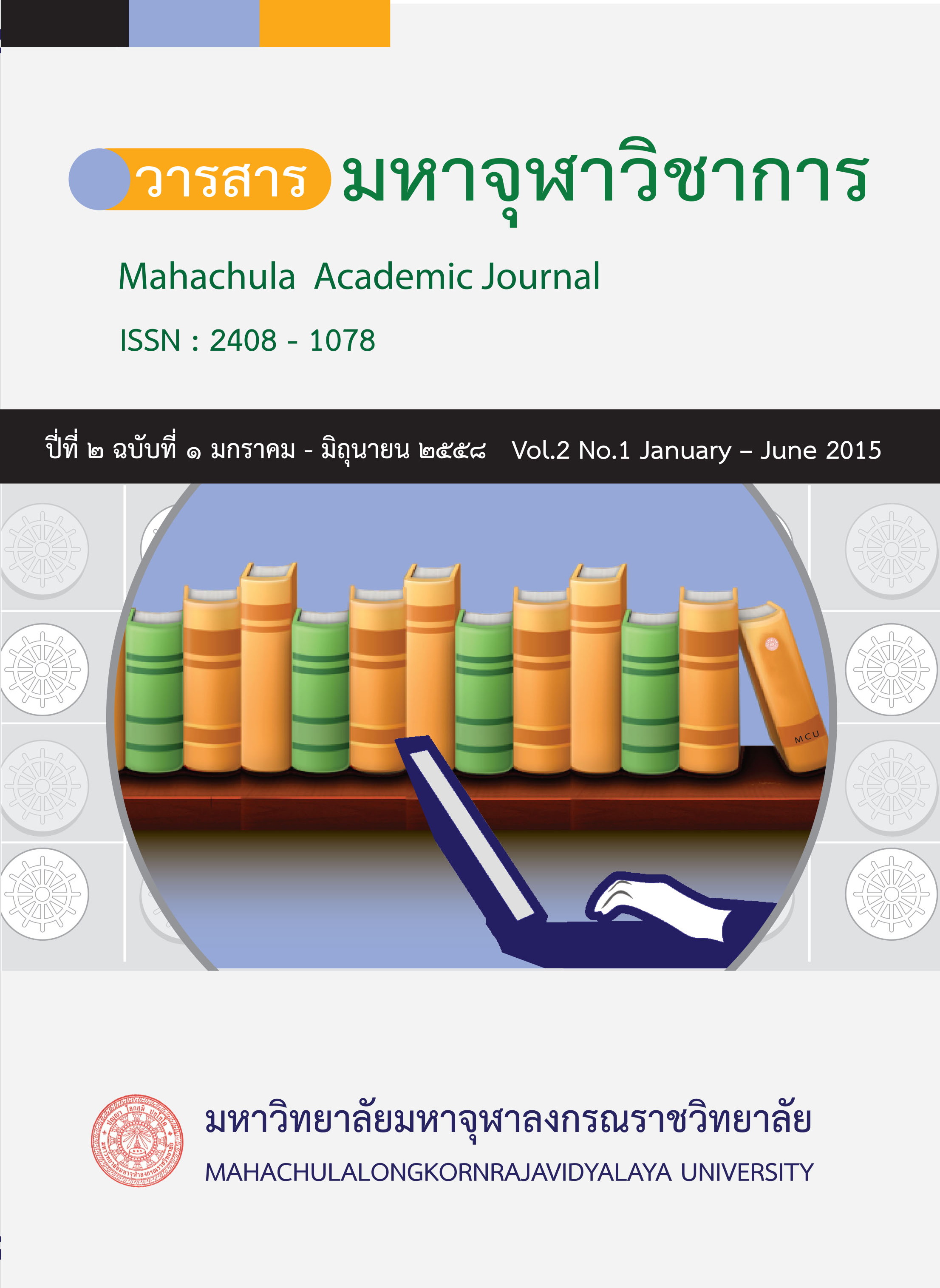Hermeneutics: Science of Understanding (Interpretation) of Theravada and Mahayana in Comparison
Main Article Content
Abstract
Hermeneutics, which is known in other words as science and art of under-standing, could help make the Buddhists come to an agreement and understand one another that there are only two main Orders of Buddhism, i.e. Theravada and Mahayana, even though some Buddhist scholars have been trying to divide
Buddhism into 3 main schools of thought, namely Mahayana, Theravada and Vajrayana as it becomes a word of mouth MTV. However, Vajrayana cannot be taken as a separate Order of Buddhism and it is inclusively recognized as only a branch of Mahayana Buddhism. This is because both Mahayana and Vajrayana follow the same theory of Hermeneutics known as ‘Skills in Means’ (Upayakausalya). In contrast with that, Theravada uses the theory of ‘Gradual Path’ (Anupubbamagga) as its Hermeneutics. More importantly, the method of ‘Skills in Means’ of Mahayana had already appeared in the Theravada’s Tipitaka, but Mahayana developed it to a greater extent that even Theravada will have to accept it by bringing it back to apply it for understanding the commentaries of Dhammapada and Jataka stories.
Article Details
References
ชะเอม แก้วคล้าย. แปล, สัทธรรมปุณฑรีกสูตร. กรุงเทพมหานคร: คณะสงฆ์จีนนิกายแห่งประเทศไทย, ๒๕๔๗.
พระธรรมกิตติวงศ์ (ทองดี สุรเตโช). การตีความพุทธศาสนสุภาษิต. กรุงเทพมหานคร: เลี่ยงเชียง, ๒๕๕๐.
มหาจุฬาลงกรณราชวิทยาลัย. อรรถกถาภาษาบาลี ฉบับมหาจุฬาอฏฺฐกถา. กรุงเทพมหานคร: โรงพิมพ์มหาจุฬาลงกรณราชวิทยาลัย โรงพิมพ์วิญญาณ, ๒๕๓๒-๒๕๓๔.
มหาจุฬาลงกรณราชวิทยาลัย. อฏฺฐสาลินี. กรุงเทพมหานคร: โรงพิมพ์มหาจุฬาลงกรณราชวิทยาลัย, ๒๕๓๒.
มหาจุฬาลงกรณราชวิทยาลัย. เปฏโกปเทโส. กรุงเทพมหานคร: โรงพิมพ์มหาจุฬาลงกรณราชวิทยาลัย, ๒๕๔๔.
พระมหากัจจายนะ, เนตติ-เปฏโกปเทสปกรณํ, โรงพิมพ์มหาจุฬาลงกรณราชวิทยาลัย, ๒๕๓๒.
พระมหาสมจินต์ สมฺมาปญฺโญ. พระพุทธศาสนามหายานในอินเดีย : พัฒนาการและสารัตถธรรม, กรุงเทพมหานคร: มหาจุฬาลงกรณราชวิทยาลัย, ๒๕๔๓.
อภิธรรมโชติกะวิทยาลัย, เนตติหารัตถทีปนี: อุปจาร และ นย โดยพระวิสุทธาจารย์. Damien Keown. The Nature of Buddhist Ethics. (N.D.), pp. 157-160.
Nalinaksha Dutt, “The Sanskrit Saddharma-pundarika” in 2500 Years of Buddhism edited by P.V. Bapat, India: Publications Division, 1987.
David E. Klemm, Hermeneutical Enquiry. Vol.1. USA: Scholar Press, 1986, pp.30-31.
Webster’s New Biographical Dictionary คำ Schleiermacher ออกเสียงเป็น ชลายเออมาเคอร์ David E. Clemm, Hermeneutical Enquiry, vol. I, (USA: Scholar Press, 1986), p.2.
Donald S. Lopez, ed., Buddhist Hermeneutics, Honolulu: University of Hawaii Press, 1988, p. 3.
Etienne Lamotte, Buddhist Hermeneutics, edited by Donald S. Lopez, (Op.Cit.), pp. 11-27.
George Bond, Buddhist Hermeneutics, edited by Donald S. Lopez, (Op.Cit.), pp. 29-45.
E. Thomas Lawson and Robert N. McCauley, Rethinking Religion: Connecting Cognition and Culture. (Cambridge: Cambridge University Press, 1990), pp. 12-31.


